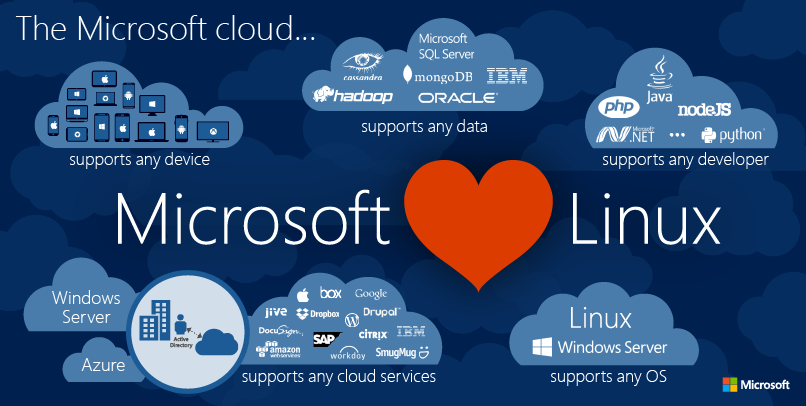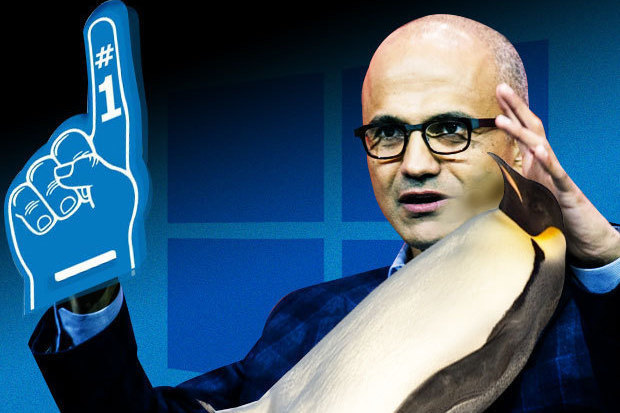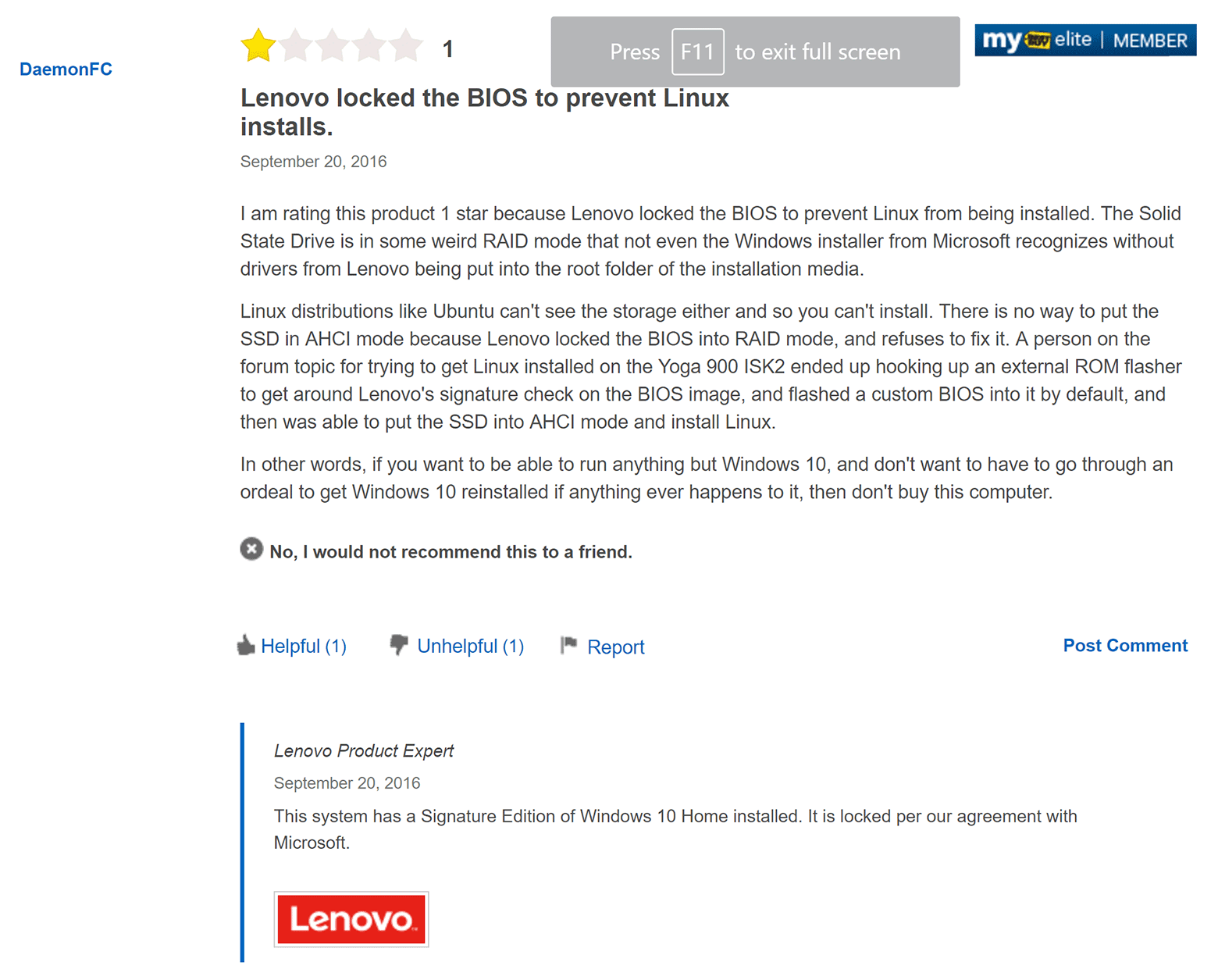Some laptops with Windows 10 can not be installed Linux

Microsoft officially declares a "love" policy for Linux and free software. The company periodically publishes the source codes of its programs, has implemented the Linux subsystem in the Windows kernel . Microsoft has a record number of assistants on Github, according to this indicator, it reached the 1st place , ahead of Facebook, Docker and Google.
However, it is not so easy to clean up your reputation and start life from scratch. Memories of the terrible actions of the company in the days when Steve Ballmer was at the helm were not erased from the memory of people. And now everything is not going smoothly: Microsoft continues to extort royalties from device manufacturers for Android , presenting dubious “ patents on Linux ”, forcing manufacturers to pre-install proprietary software from Microsoft. The last victim of such a policy a month ago was the company Lenovo , which pledged to preinstall Microsoft Office, OneDrive and Skype programs on smartphones.
')
Not surprisingly, in this situation, some users suspect Microsoft of “cheating”.

Recently there have been rumors on the forums that some models of personal computers with the preinstalled Windows 10 operating system are not so friendly to Linux. In particular, a free OS cannot be installed on a number of Lenovo laptops that come with some version of Windows 10 Signature Edition. According to users, the designation “Signature Edition” means that Microsoft has an agreement with the manufacturer regarding these computers that the computer is “locked” to the Windows operating system.
It turned out, for example, that a Lenovo Yoga 900 ISK2 UltraBook laptop cannot install Linux in a proprietary RAID mode, which is locked through UEFI / BIOS. The Linux system simply does not “see” this SSD-drive.
Similar problems with installing Linux have arisen at the buyer of the laptop Ideapad 710S .

Screenshot from the forum where the user complains about the inability to install Linux on a Lenovo laptop
This is a known problem : on Intel platforms, the drive is configured in UEFI / BIOS in two ways: as “standard” or as RAID. In the second case, the PCI ID identifiers simply change to disable standard drivers and ensure the use of specific Intel drivers that exactly have RAID support. Intel has not prepared commits to the Linux kernel to support the RAID mode for these drivers, therefore, with these UEFI / BIOS settings, the Linux operating system does not “see” the drive.
In this case, Lenovo laptops do not have the ability to change the configuration of the drive, it is rigidly installed as a RAID.
A dissatisfied user complained to a Lenovo representative. He explained that in this case the Signature Edition of the Windows 10 Home operating system was installed on the laptop. "It is locked in our agreement with Microsoft," said the employee.
It is not entirely clear what this may mean. It is possible that no one wanted to oppress the Linux operating system. Perhaps the hard setting of the RAID mode is due to the need to use Intel drivers, rather than Microsoft drivers. Most likely, because the latest Intel hardware needs special power management settings , and the standard Microsoft driver does not provide this.
However, a de facto problem exists. Linux can be installed on such laptops, but Linux will not be able to work with an SSD drive. At the same time, the question remains open as to what the “Signature Edition” classification of Windows 10 Home actually means. According to the definition of Microsoft itself, these are computers “without pre-installed redundant programs” (without pre-installed bloatware) that degrade PC performance, with the default Windows Defender antivirus turned on, with a quality keyboard, with a touchpad that meets Microsoft standards and other equipment that conforms to Windows hardware certification standards.
If you believe the employee Lenovo, then in this list you need to add more and “zalochku” on the operating system Windows, but officially this requirement is not declared.
A large list of desktops, laptops and tablets in the “Signature Edition” category is currently available in the Microsoft Store.
Of course, Lenovo could provide the user with a choice of settings in UEFI / BIOS, but because of the potential power management issues mentioned, this would lead to unnecessary questions from Lenovo technical support. Probably, the leadership of the Chinese company decided that the number of Linux users is so small that they can be neglected for the sake of reducing the number of calls to technical support from ordinary users.
According to Matthew Garrett, developer of Linux power management subsystems, CoreOS security subsystem, and a member of the Free Software Foundation, the main problem is that Intel doesn’t make enough efforts to ensure that free OSs work well on the latest versions of its hardware — developers have There is enough information from Intel about how to provide the most efficient power management, there is no support for devices in RAID mode, and there is no certainty that the situation will somehow improve in the future. If Intel provided developers with all the necessary information, then a problem with Lenovo laptops would never have arisen, says Matthew Garrett.
Source: https://habr.com/ru/post/397687/
All Articles